SCAN TOOL WORKSHEET ECM EQUIPPED VEHICLES

VEHICLES AFFECTED; 1987 ALL VEHICLES
The SCAN TOOL WORKSHEET was designed to help organize the data available when diagnosing an E.C.M. equipped vehicle. The form, GMP514, is available at no charge from Dyment Limited and comes in a pad of 50 sheets.
The column, 'Key On, Engine Off' should be completed first. Any abnormal conditions detected should be repaired before proceeding to the next column.
Note that MAP or VAC readings will vary slightly due to atmospheric pressure changes (weather changes or geographical location).
The 'Idle, Closed Loop' column should be completed after the engine has been run long enough to heat the oxygen sensor to operating temperature.
The three remaining columns are provided for 30 MPH, 50 MPH or 60 MPH data if the nature of the customer's concern dictates a road test. Local speed limits may require the test to be done at 50 MPH or 60 MPH. It is important for purposes of repeatability that road load values be recorded. Road load is defined as driving on level road in the highest gear practical with only enough throttle to maintain vehicle speed. These operating conditions are critical as only small changes of throttle opening or engine load will cause major changes in the data.
Following are some important points to remember when using a scan tool for diagnosis:
Always confirm the customer's concern without the scan tool installed as it may alter ignition timing and fuel control to the point of eliminating or inducing a driveability problem.
Ensure the correct engine/emission system has been selected.
Use the mpsi multi-Scanner with the following 1987 model year engines by selecting the 1986 model year setting.
Engine Code System
L,3,7 bu PFI S CH28 PFI 9 (Fiero) P28 PFI R (Truck) CH28 EFI Z (Car and Truck) CH43 EFI H, K, N (Truck) CH43 EFI
All other 1987 vehicles (except Cadillac and GM30 cars) require the use of the M.P.S.I. Model 8192 Converter recently sent to your dealership. This tool allows the Multi Scanner to understand the high speed data from the ALCL. Refer 10 the Instruction Manual supplied with the Converter for details.
To help you become familiar with the scan tool readings, attached are some sample sheets completed from known good vehicles. These sheets are intended only as an aid in understanding scan readings and are not to be considered as vehicle specifications for repair decisions.
You are strongly urged to complete scan sheets when testing known good cars (P.D.I., rattle/squeak repair, wheel balance repair, etc.). This personal library will hell you quickly identify out of line conditions when diagnosing a customer's vehicle.
When calling the Technical Assistance (entre (1-800-), please be prepared to quote data from a compl, ted SCAN Worksheet. For example, PROM ID tells us the transmission and axle ratios, A/C or heater options, etc. so we may be more accurate in helping you.
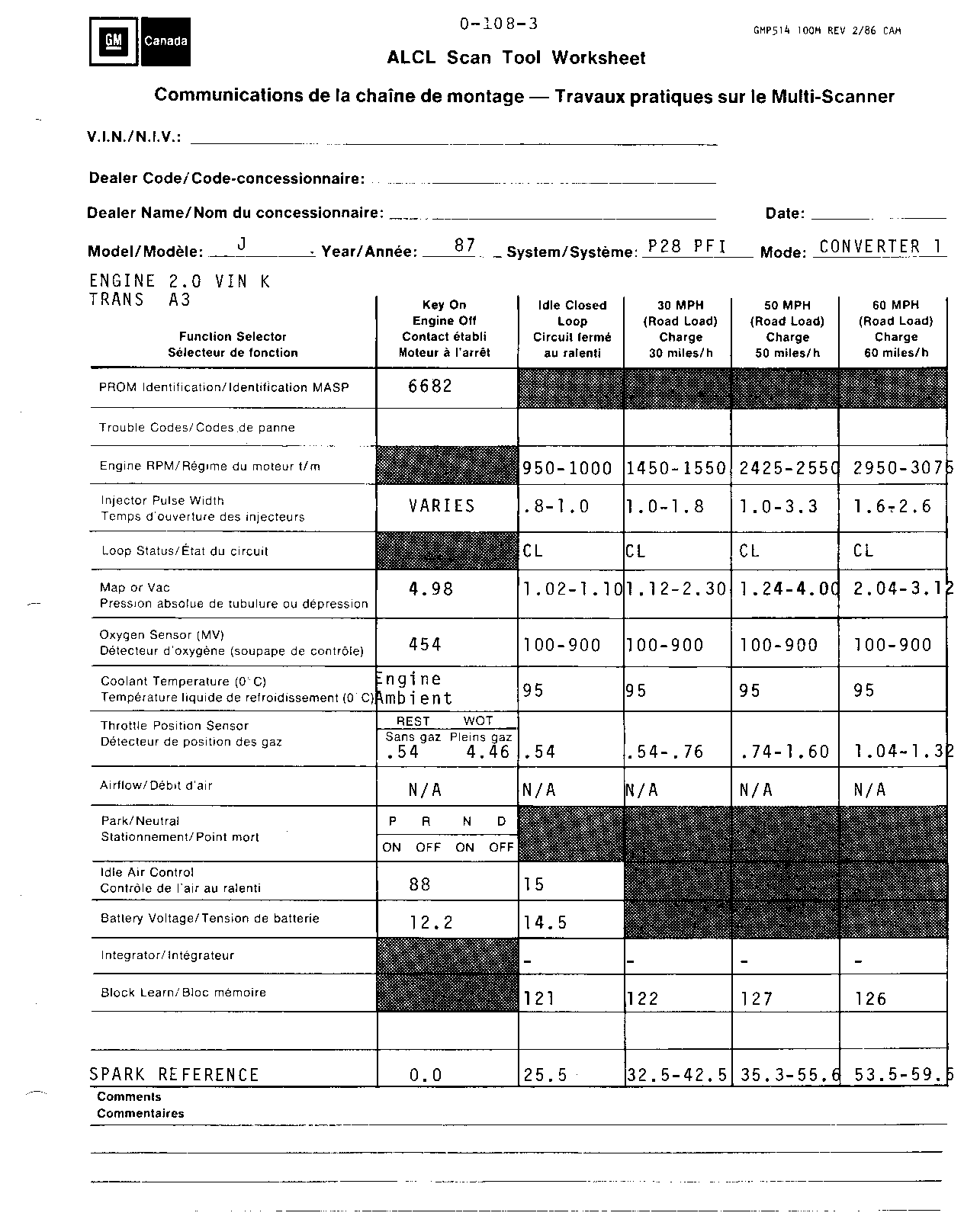
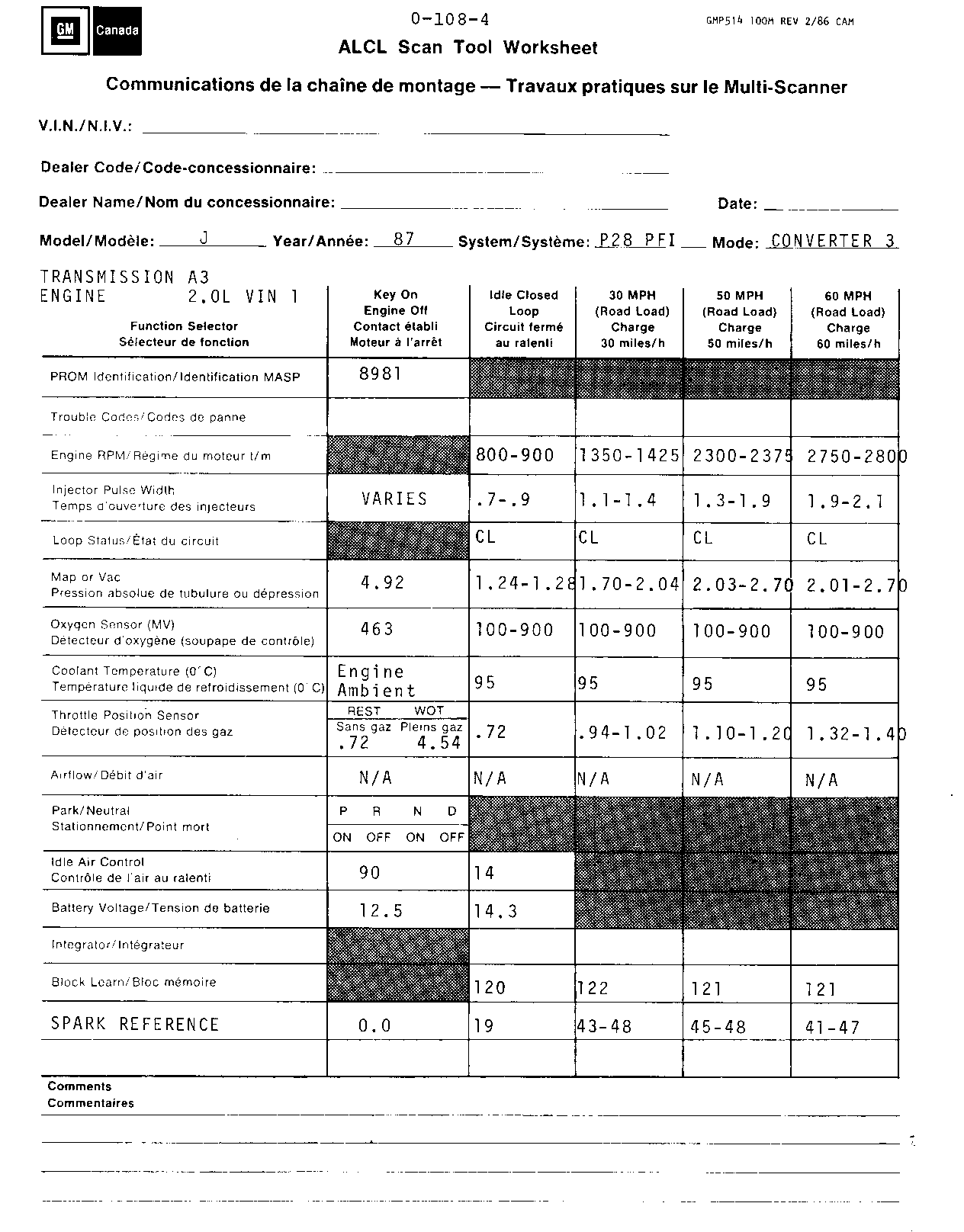
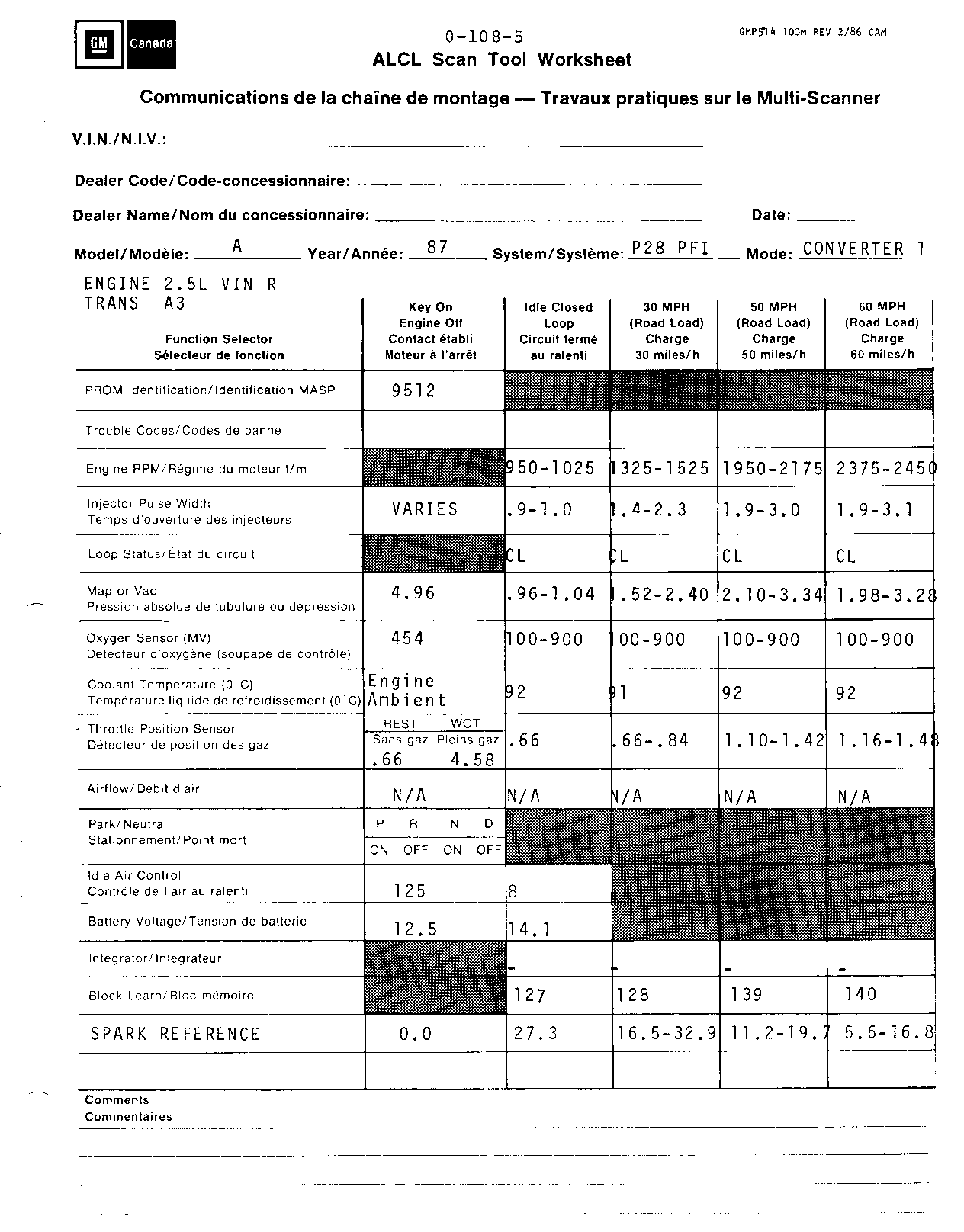
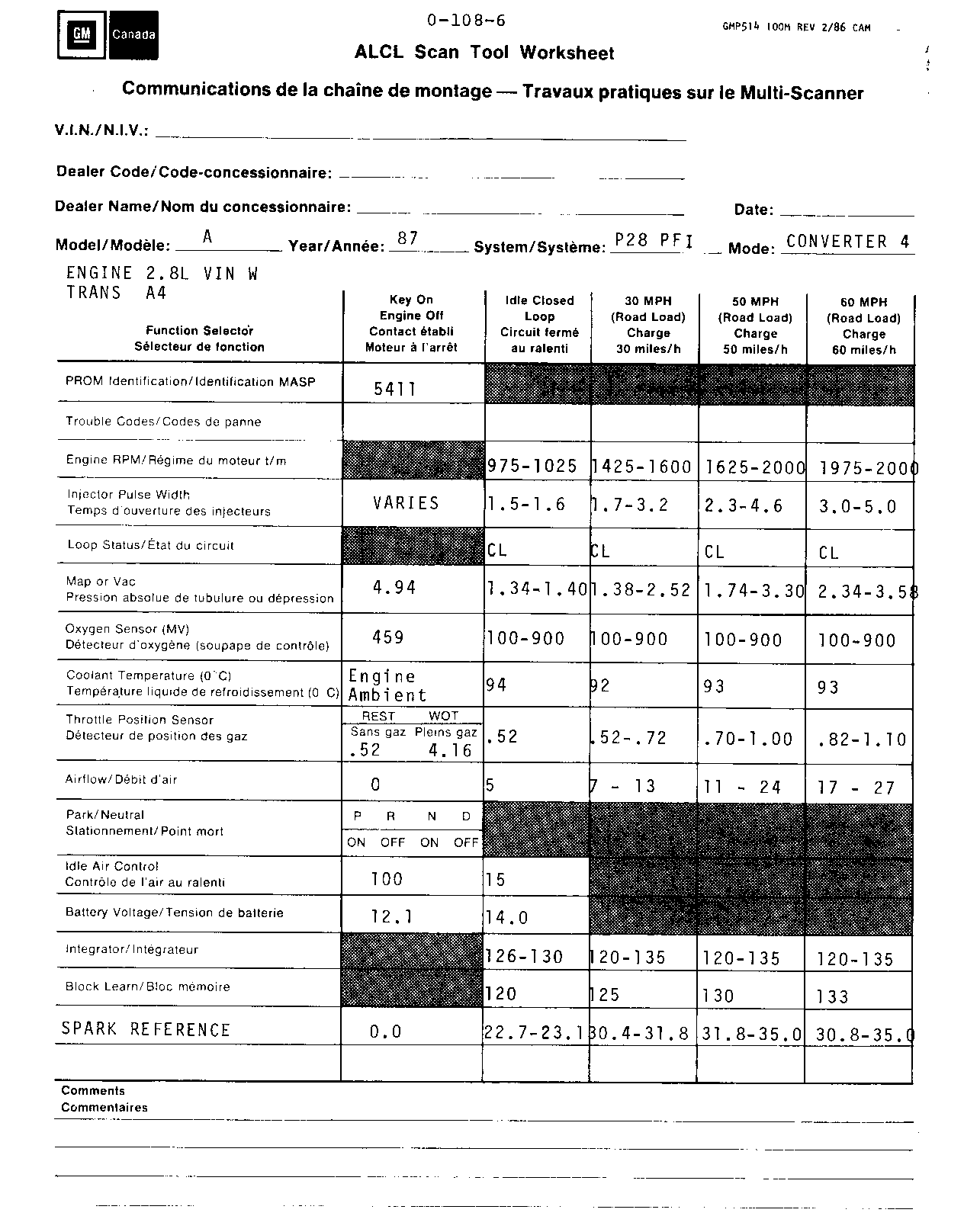
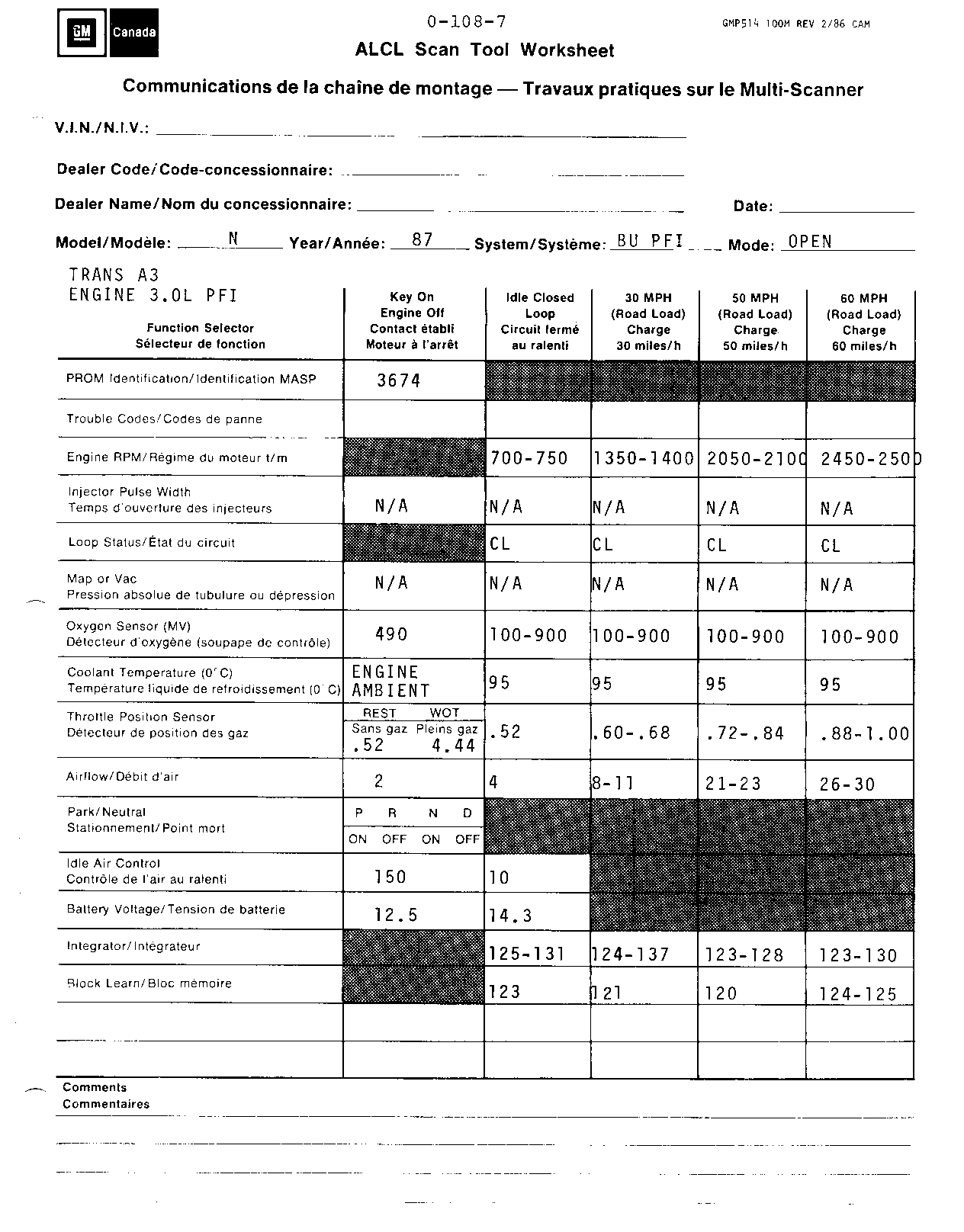



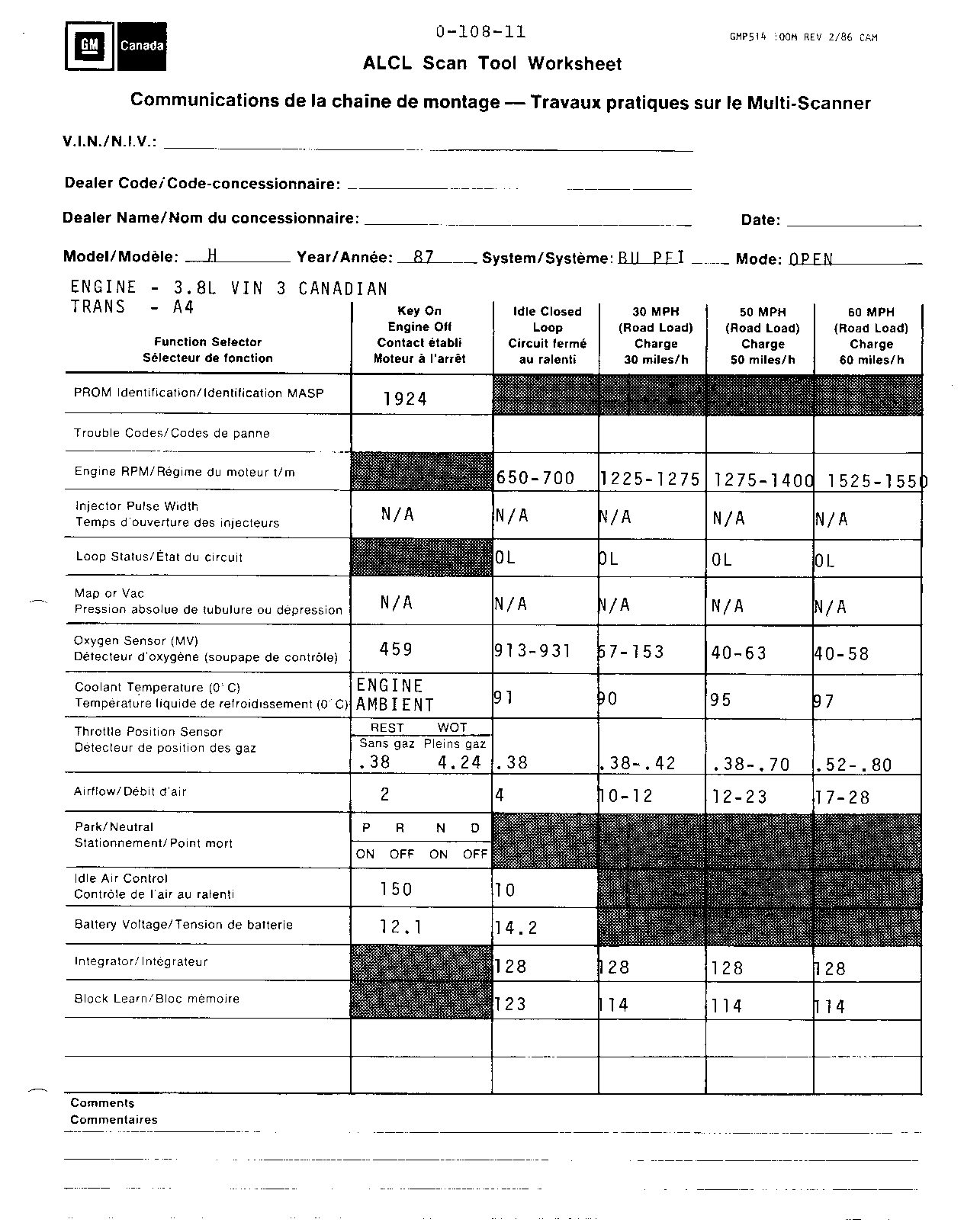
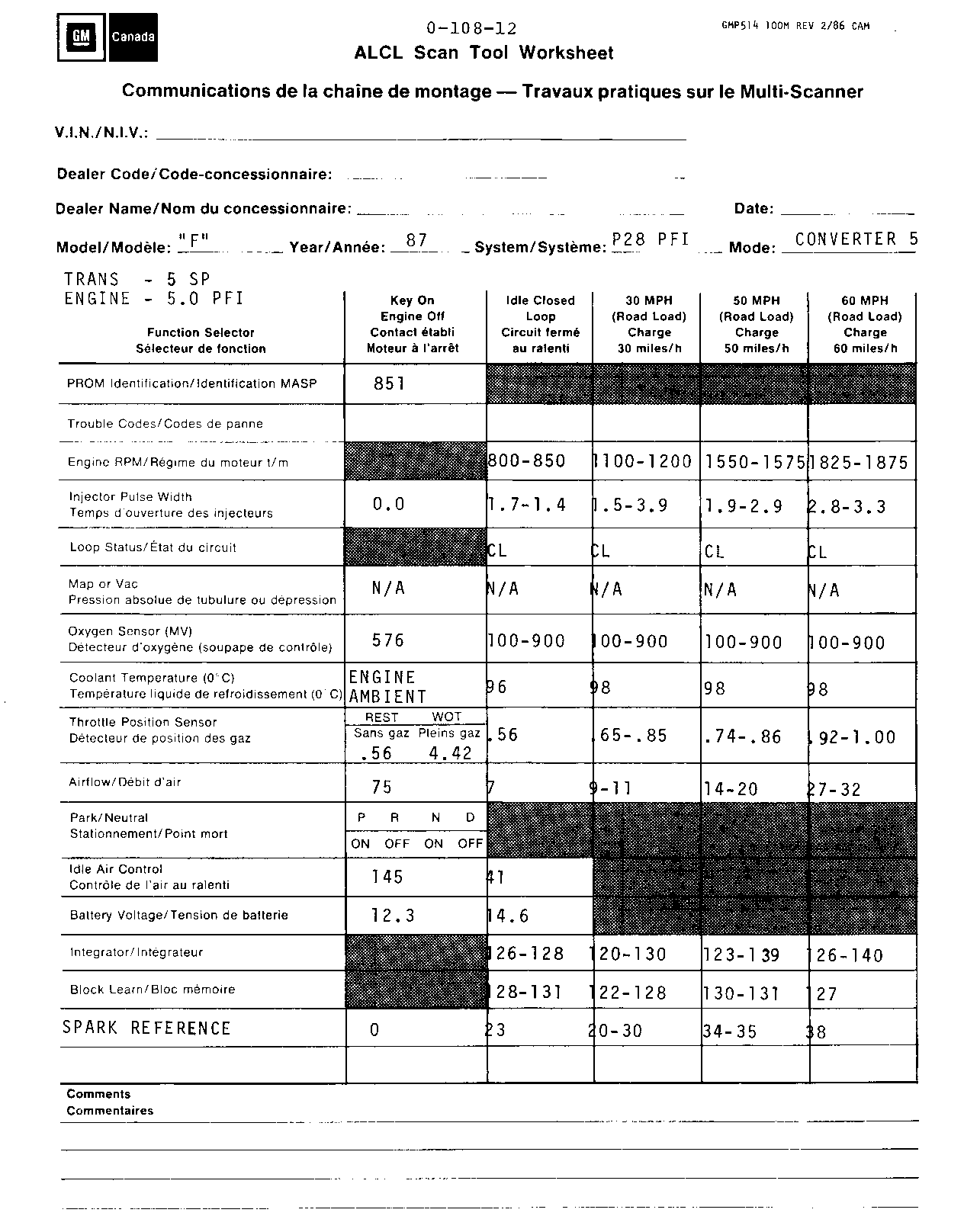
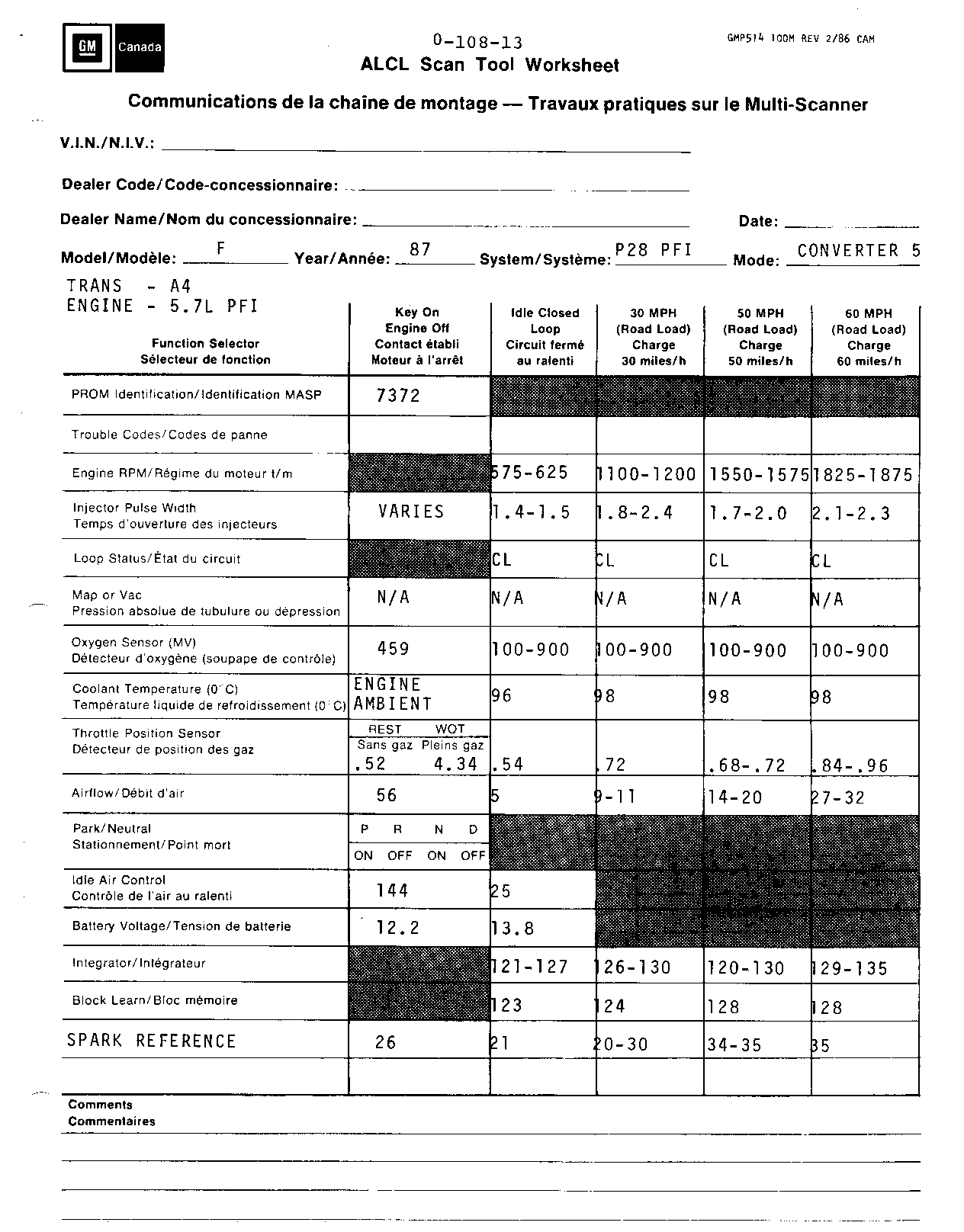
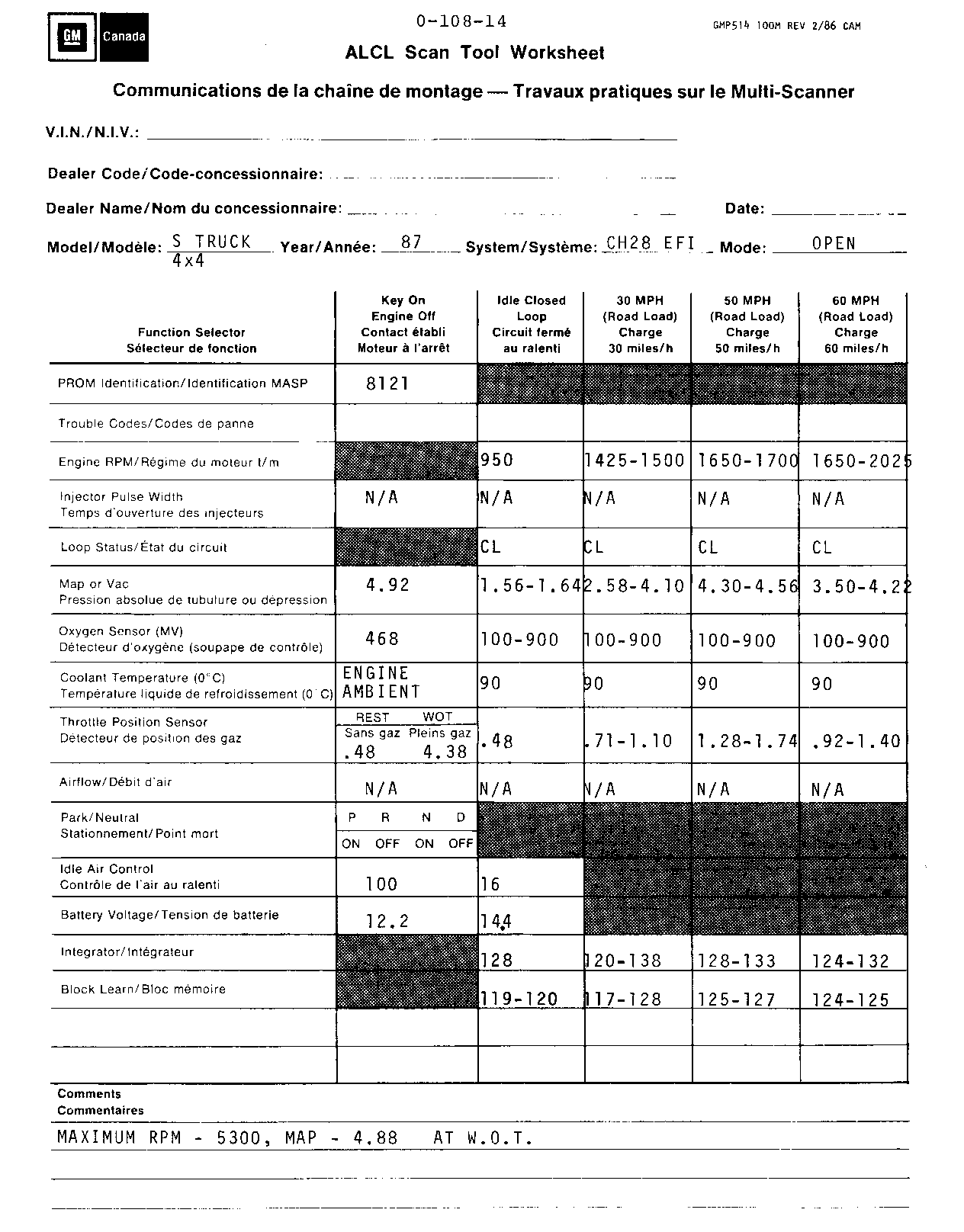
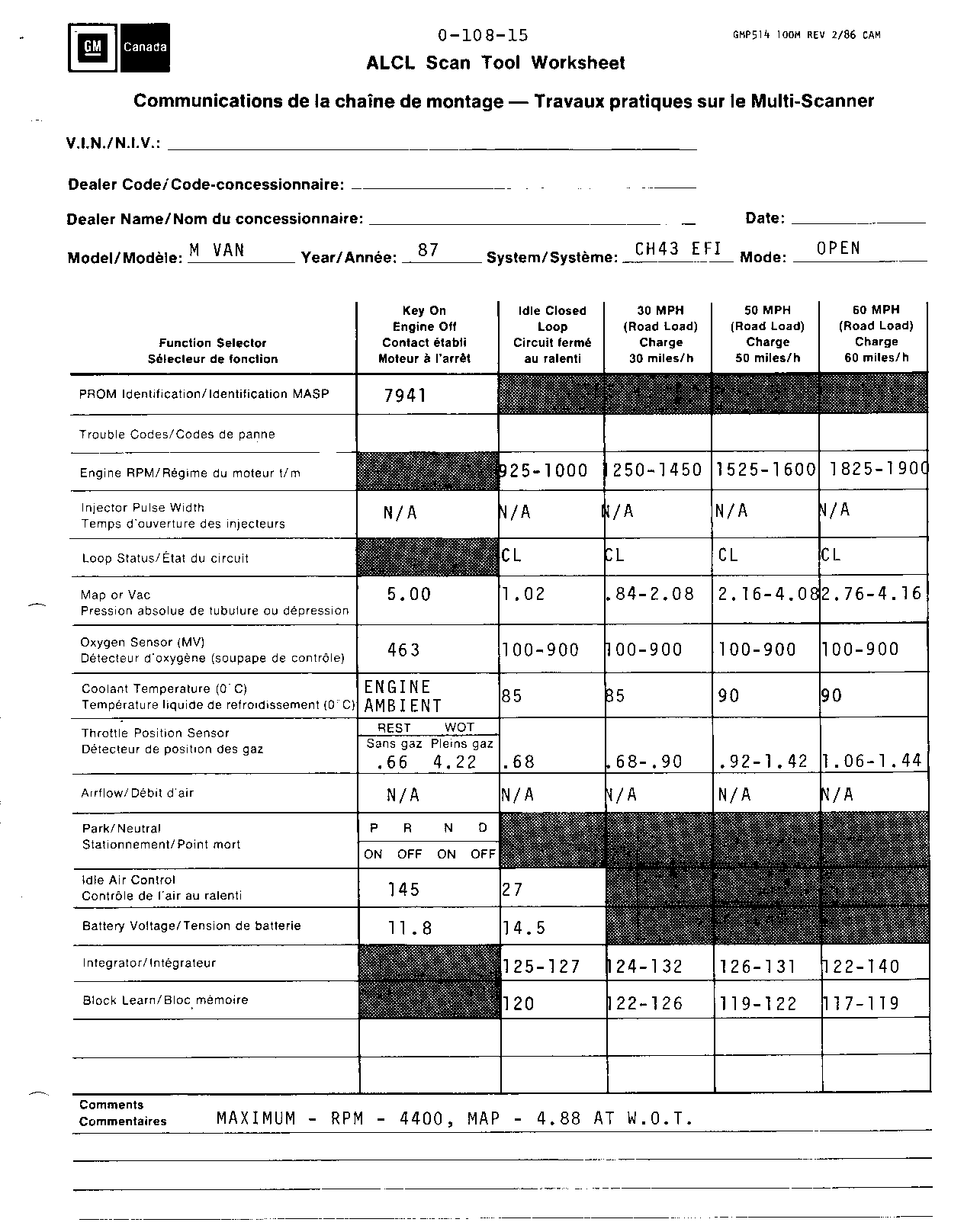

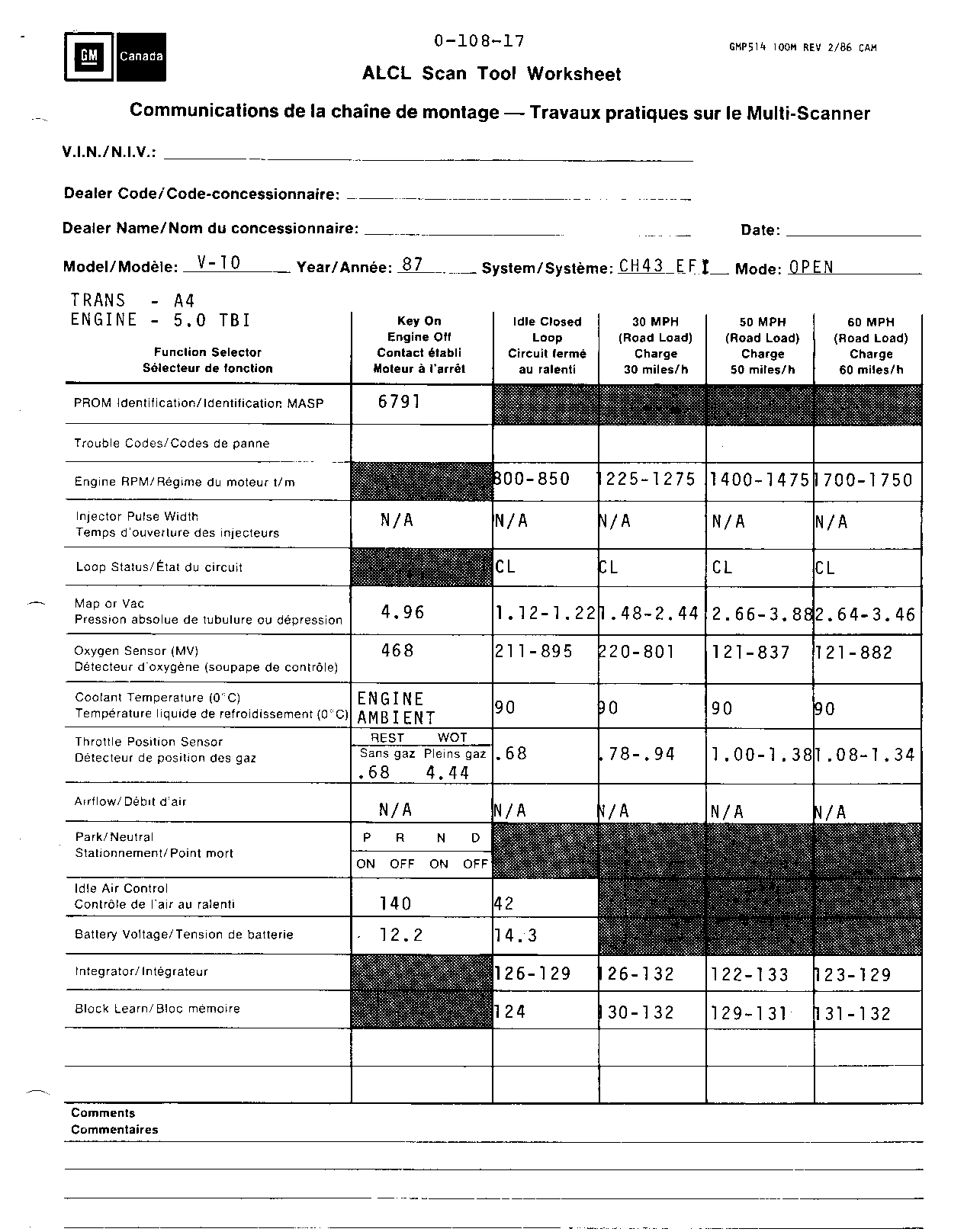
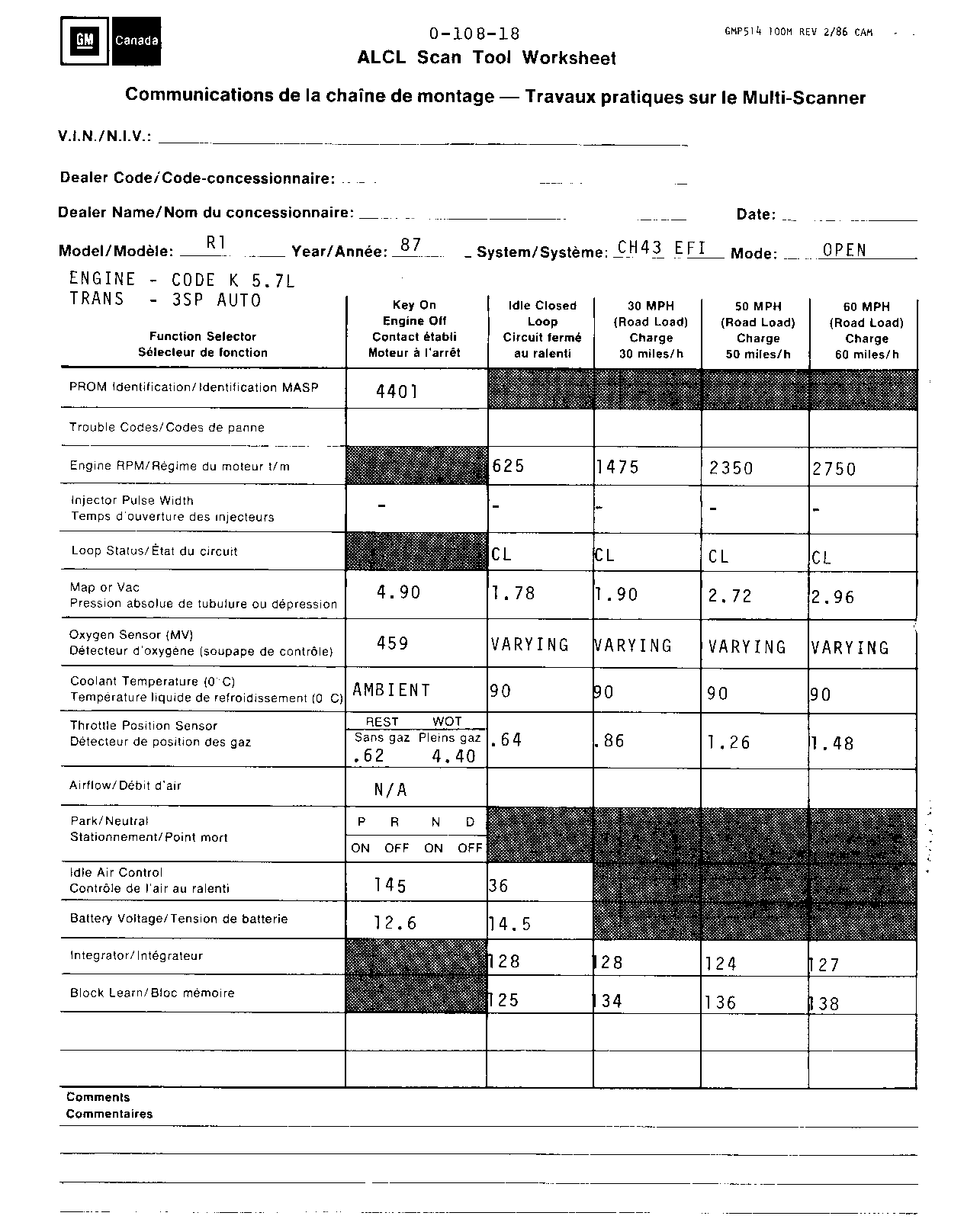
General Motors bulletins are intended for use by professional technicians, not a "do-it-yourselfer". They are written to inform those technicians of conditions that may occur on some vehicles, or to provide information that could assist in the proper service of a vehicle. Properly trained technicians have the equipment, tools, safety instructions and know-how to do a job properly and safely. If a condition is described, do not assume that the bulletin applies to your vehicle, or that your vehicle will have that condition. See a General Motors dealer servicing your brand of General Motors vehicle for information on whether your vehicle may benefit from the information.
